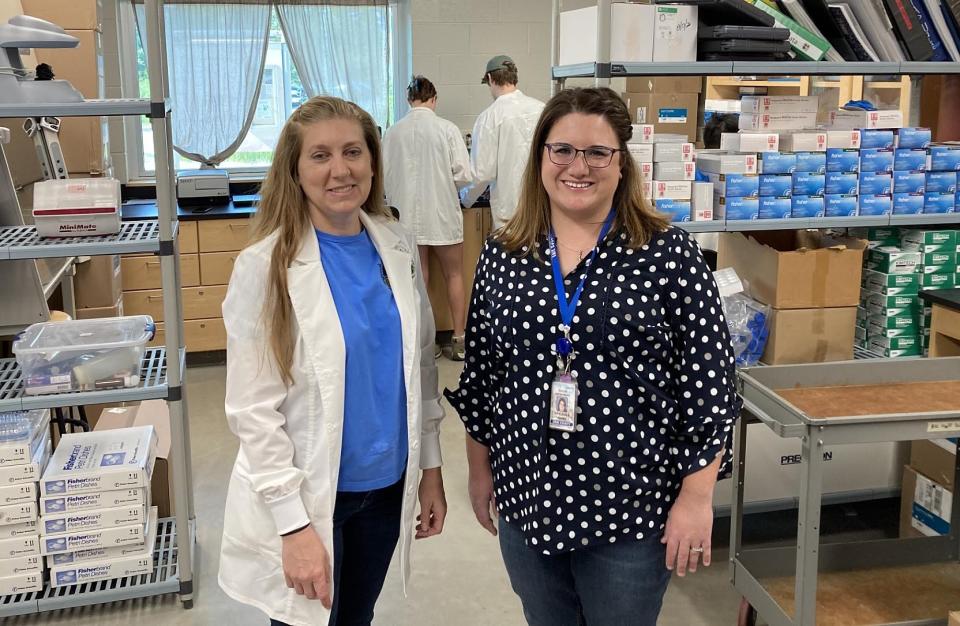Erie's dog swimming advisory season has already started with first HAB of the year
Since 2014, Jeanette Schnarrs and her staff at the Regional Science Consortium have been testing the toxins released by harmful algal blooms in Erie County waters.
Those toxins never reached the threshold for dog swimming advisories until July or August, when the summer heat would warm Lake Erie, Presque Isle Bay and other county waterways, sparking HAB growth.
That is no longer the case. An advisory was posted June 1 at Presque Isle State Park's Beach 2, warning people to keep their dogs out of the water.
More: Summer 2023 at Presque Isle brings lighthouse birthday, swimming, sand, food trucks, music
That advisory ended Thursday but another was posted that day at the South Pier along Erie's bayfront.
"We actually did some preliminary sampling May 4 and there was a hit with one of those samples," said Schnarrs, the consortium's executive director. "We now see positive samples when we start in May and we're still seeing them when we have to stop in October."

HAB monitoring is important because the blooms can produce toxins that attack the liver and nervous system, causing a potentially life-threatening illness in humans and some animals.
The thresholds for dog swimming advisories are lower than those for human advisories, because dogs are more likely to drink the water and will also lick it off their fur.
"We're not saying people can't take their dogs to the beach, but they should watch what the dog is doing in the water," said Breanna Adams, director of environmental health services for the Erie County Department of Health. "And watch for the advisory signs."
More: What the 2023 spring walk revealed about Presque Isle State Park's beaches
Testing for HAB toxins is occurring at 30 sites across the county, Schnarrs said. Many of those are located at Presque Isle but others include Freeport Beach in North East, Eaton Reservoir in Greenfield Township and Liberty Park along Erie's bayfront.
Funding for the testing, about $120,000 a year, comes from a combination of federal and state grants, most of which on a year-by-year basis.
"We pieced together enough funding this year to again test for all four toxins associated with HABs," Schnarrs said. "It gives us a better picture of what is going on."

Test results are posted late Thursdays or early Fridays on the websites of the consortium and the County Health Department.
"It's important to pay attention to the advisories and the signs because you can have high toxin levels even when the bloom isn't apparent," Schnarrs said. "The algae can sink but the toxins, which aren't visible, can still be in the water."
Schnarrs and Adams also said water currents can move the toxins, so they don't recommend having your dog enter the water just a few yards away from an advisory area.
Besides higher temperatures, HAB growth is controlled by the amount of fertilizer in the water. Rainstorms can wash fertilizers into the streams and creeks that empty into Lake Erie and Presque Isle Bay, and the nutrients from the fertilizer feed the algae.
"So we educate gardeners and farmers about best practices for fertilizing, including not fertilizing just before a rainstorm or when the ground is dry," Schnarrs said. "And don't overfertilize."
More: Antibiotics for humans, livestock found in waters flowing to Lake Erie
Contact David Bruce at [email protected]. Follow him on Twitter @ETNBruce.
This article originally appeared on Erie Times-News: Harmful algal blooms found in Erie County, dog swimming advisory posted
